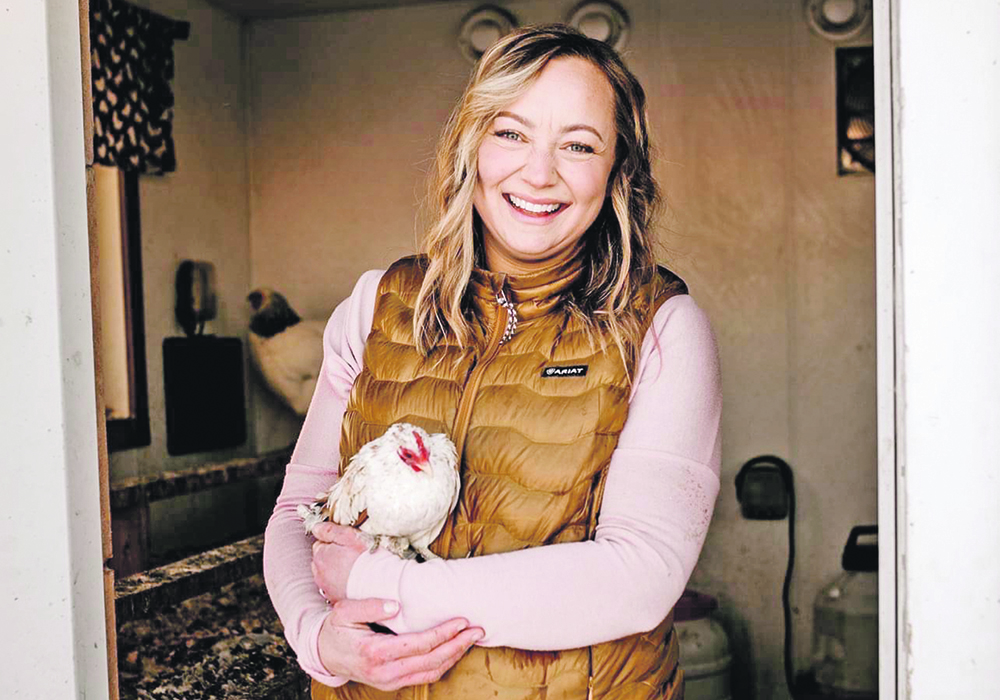Backyard chicken producers are urged to make sure they understand housing basics before bringing the birds home
The price of eggs — not to mention the idea of fluffy chicks — is enough to get even a confirmed suburbanite thinking about the merits of keeping a backyard flock these days.
But eager chicken fanciers shouldn’t get ahead of themselves, says Cassandra Kirkpatrick, the urban hen and small flock programming instructor for the Alberta Farm Animal Care Association, an animal welfare advocacy organization begun by livestock producers in 1993.
Before any birds come home, she strongly advises would-be chicken owners to familiarize themselves with some housing basics.
Read Also

Agritechnica Day 3: Hybrid drive for a combine, data standards keep up to tech change and tractors of the year
Agritechnica 2025 Day 3: Hybrid drive for a combine, data standards keep up to tech change and tractors of the year.
“Ventilation is probably the most misunderstood concept in keeping small flocks,” she says. “There is an art to it.”
While the urge to seal things up tight in the face of typical prairie winter temperatures may be strong, Kirkpatrick urges chicken owners to manage their coops not for temperature but for humidity.
“Frostbite is usually an indication of moisture or humidity, not temperature. Even a quite mild temperature, if the humidity is too high, can mean frostbite.”
To give chickens the best possible conditions for productivity and good health, ventilation should be located high on the wall where roosting birds will be out of any direct drafts. Paying attention to your unique situation — including the most common wind direction and where the sun hits — enables chicken owners to make adjustments through the use of baffles to block wind or to make the most of passive heat.
While Alberta has no province-wide building codes for small flocks, many municipalities do. Owners must make sure they are in compliance.
“Generally, we advise that each bird needs four sq. feet in the coop and 10 sq. feet in an outdoor run,” she says. “If someone is building a coop, ideally we want 20 percent of the wall space to be ventilation.”
Many backyard flocks are housed in areas where the ventilation, which means doors, windows or a small bathroom fan, may be the only means of getting fresh air into the birds.
“In summer, there’s plenty of airflow — you prop open the man door or leave a window open,” says Kirkpatrick. “In winter, we have to be so careful not to let the humidity get too high.”
While some small flock owners advise removing water from the coop to reduce moisture, this isn’t a strategy Kirkpatrick likes, noting that birds on a light schedule to promote winter laying are often awake and up for hours before they’re allowed out to get water.
As well, the “deep litter method” — using composting bedding material to maintain heat in a coop — is often used as an excuse for poor coop hygiene.
“This is a challenge,” she says. “People aren’t managing it, not turning it, not starting with the right foundation and their humidity levels get higher and higher.
“It’s the humidity that is so important. Feces contain a lot of water.”
Managing a coop and flock for humidity rather than temperature can also help to reduce the risk of respiratory disease. After a tumultuous 2022 in which avian influenza ran amok through backyard and commercial flocks, maintaining and promoting ventilation is among the chicken owner’s first lines of defence.
“If it’s -40 C, they’re not going outside,” points out Kirkpatrick. “Poop contains a lot of moisture. Breathing has a lot of moisture. Pay attention to your birds. Look at your windows — condensation is a sign your humidity is too high.
“It’s better for it to be a colder temp, draft-free and dry than warmer but with humidity through the roof.”















